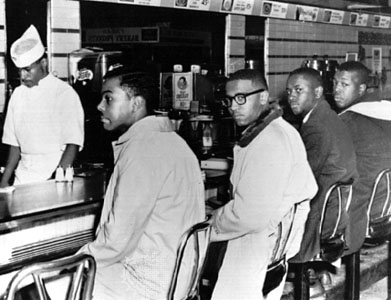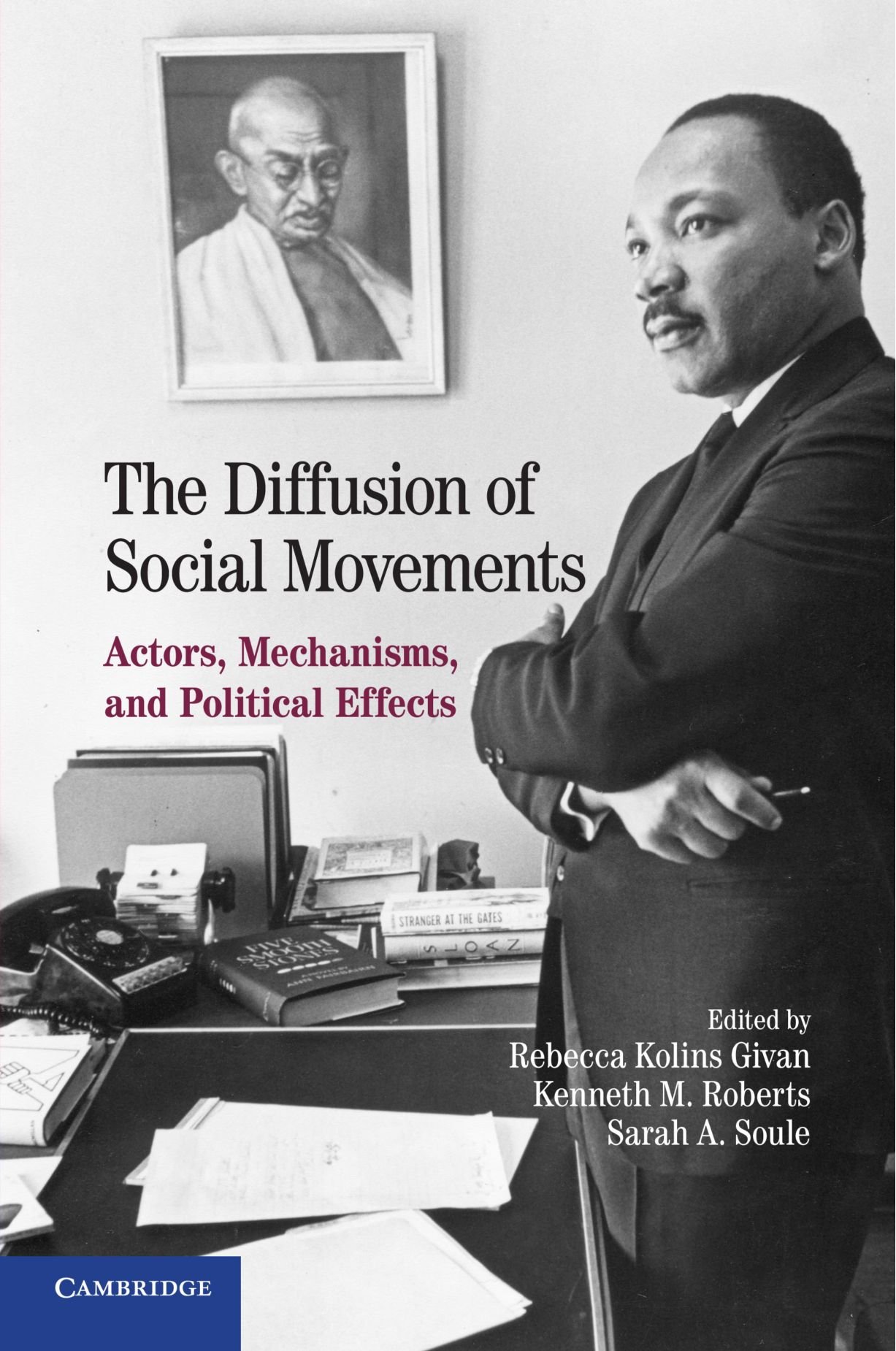
Joseph McNeil, Franklin McCain, Billy Smith, Clarence Hutchinson
The Wave of Sit-In Protests in the American South, 1960
 |
| Woolworth’s, Greensboro, North
Carolina, Feb. 2, 1960: Joseph McNeil, Franklin McCain, Billy Smith, Clarence Hutchinson |
In collaboration with Kenneth T. Andrews (now at Washington University), I investigated the eruption of sit-ins against racial segregation in the American South in 1960. This wave of protest has been studied by many historians and sociologists, but they have focused on a handful of cities with sit-ins—thus sampling on the dependent variable. We compiled a dataset of 334 cities in the South; 66 of these cities experienced sit-ins in the spring of 1960. These data enabled us to rigorously examine the causes and consequences of the sit-in protests.
Sociologists have long argued over whether this wave was spontaneous or organized. The Dynamics of Protest Diffusion (American Sociological Review, 2006) presents an event-history analysis of the diffusion of protest events. It demonstrates that movement organizations played an important role in orchestrating protest; what mattered was a cadre of activists rather than mass membership. In addition, news media were crucial for conveying information about protest events in other cities.
Who Joined the Sit-ins and Why (Mobilization, 2006) reanalyzes a sample survey of black students that was conducted 1962. The results undermine the conventional view that church congregations were loci for mobilization, and emphasize the significance of misplaced optimism about white attitudes. In part, sit-ins occurred because black students underestimated the intransigence of their white opponents (a finding which replicates my argument about workers' optimism in 1886).

Turning to the consequences of the sit-ins, From Protest to Organization (The Diffusion of Social Movements, Cambridge University Press, 2010) traces their effect on movement organizations in the South in the early 1960s. Surprisingly, we find that there was no great expansion of organization in the wake of the sit-ins (aside from the founding of SNCC). Controlling for prior organizational ecology and sociopolitical variables, cities with sit-ins did not recruit more members or form more local affiliates than cities without sit-ins.
Protest Campaigns and Movement Success (American Sociological Review, 2015) demonstrates that sit-ins had a major impact on desegregation in the early 1960s. Controlling for all the factors that predicted the incidence of sit-ins, cities where protest occurred were more likely to undergo desegregation. In addition, desegregation was more likely if sit-ins had occurred in nearby cities.
We have deposited our dataset of 334 cities—containing 62 social, economic, and political variables—with the Inter-university Consortium for Political and Social Research.
An article in a top political science journal claimed that these Civil Rights protests in the early 1960s had a lasting impact on the attitudes of whites, detectable even after half a century. Did Local Civil Rights Protest Liberalize Whites’ Racial Attitudes? (Research and Politics, 2020) refutes this claim, which depended on the author’s failure to measure college students in 1960 (which predict protest) and college education in the 2010s (which predicts liberal attitudes).
Michael Biggs, Department of Sociology, University of Oxford